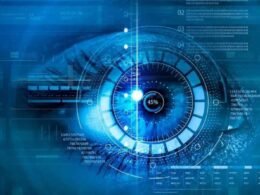Face Recognition Technology has gone through a surprising change since its origin. Starting during the 1960s with simple frameworks that could distinguish fundamental facial elements, it has developed into a refined innovation used in different areas today. Early difficulties included low exactness rates, the failure to deal with varieties in lighting and points, and restricted computational assets. In any case, the appearance of AI and all the more as of late, profound learning, has moved the precision and dependability of Face Recognition t frameworks.
In the previous 10 years, leap forwards, for example, convolutional brain organizations (CNNs) and the accessibility of huge datasets have decisively further developed execution. These progressions have prompted applications going from cell phone opening to modern observation frameworks, denoting a huge change in how character is perceived and overseen in our undeniably computerized world.
How Face Recognition t Functions: An In the background Look
At the center of face recognition Technology lies the course of facial component extraction. This includes catching a picture of a face and recognizing key elements, for example, the distance between the eyes, the state of the facial structure, and the shapes of the lips. These highlights are then changed into a numerical portrayal, frequently alluded to as a “face vector.”
The job of calculations and AI is basic in this cycle. Customary calculations depended on high-quality elements and rules, which restricted their viability. In any case, the presentation of AI has permitted frameworks to gain from immense measures of information, working on their capacity to recognize and order faces.
Profound learning organizations, especially CNNs, have upset the field. These organizations can consequently gain mind-boggling examples and elements from pictures, empowering them to deal with varieties of lighting, looks, and directions. Therefore, current Face Recognition t frameworks gloat noteworthy precision rates, frequently surpassing 95% in controlled conditions.
Utilizations of Face Recognition t: Changing Ventures
Face Recognition Technology has pervaded different ventures, changing how we interface with innovation and one another.
Security and Access Control
One of the main applications is in security and access control. Numerous associations currently utilize facial acknowledgment for representative ID, supplanting customary keycards with biometric arrangements. This improves security by decreasing unapproved access and working on the section cycle.
Installment and Verification
In the monetary area, Face Recognition t is progressively utilized for verification in installment frameworks. By permitting clients to confirm exchanges with their countenances, monetary establishments upgrade security while giving a consistent client experience. This innovation has gotten forward momentum with the ascent of versatile installment arrangements, where clients can finish exchanges with only a look.
Policing Wrongdoing Avoidance
Policing has embraced Face Recognition t for different purposes, including suspect recognizable proof and group observing during public occasions. While these applications can work on open security, they additionally raise concerns with respect to protection and likely abuse.
Web-based Entertainment and Showcasing
Virtual entertainment stages influence Face Recognition t to improve client encounters, from consequently labeling companions in photographs to making customized promoting. By dissecting client information, organizations can target explicit socioeconomics all the more actually, however, this brings up issues about assent and information protection.
Medical Services and Clinical Exploration
In medical services, Face Recognition t can aid patients in recognizable proof, particularly in crisis circumstances. Moreover, specialists use Face Recognition Technology in examinations of feelings and mental circumstances, further extending its applications in clinical exploration.
The Moral Ramifications of Face Recognition t
As Face Recognition Technology turns out to be more inescapable, it delivers critical moral contemplations.
Security Concerns and Information Assurance
One of the essential worries is the expected attack of protection. The capacity to recognize people in broad daylight spaces brings up issues about observation and the disintegration of namelessness. As frameworks become more coordinated, the gamble of information breaks and unapproved admittance to delicate data increments.
Predisposition and Separation in Facial Acknowledgment Frameworks
Studies have demonstrated the way that faces acknowledgment frameworks can display inclination, especially against people with hazier complexions and ladies. This is frequently because of the absence of variety in preparing datasets, prompting higher blunder rates in unambiguous segment gatherings. Such predispositions can propagate segregation, making it fundamental for address these issues in framework improvement.
The Potential for Abuse and Observation
The potential for abuse of Face Recognition Technology represents a huge moral issue. Legislatures and associations could take advantage of these frameworks for mass reconnaissance, encroaching on common freedoms. Finding some kind of harmony between security and individual flexibility is difficult for policymakers.
The Fate of Face Recognition: Arising Patterns and Developments
The fate of face verification Technology is ready for additional advancement and intricacy.
Biometric Combination: Consolidating Face Recognition t with Different Modalities
One arising pattern is biometric combination, which joins Face Recognition t with other biometric modalities, like unique marks and iris acknowledgment. This multifaceted validation approach can improve security by giving various layers of personality confirmation.
Continuous Face Recognition t in Testing Conditions
Headways in handling power and calculations are empowering constant Face Recognition t in testing conditions, like swarmed spaces or low-light circumstances. This capacity could alter security applications, considering quicker and more exact recognizable proof in different situations.
Moral man-made intelligence Improvement and Dependable Utilization of Face Recognition t
The improvement of moral man-made intelligence systems is turning out to be progressively significant. Associations are encouraged to take on straightforward works on, guaranteeing that Face Recognition t frameworks are planned with reasonableness, responsibility, and straightforwardness as a primary concern. Connecting with partners, including networks impacted by these innovations, is urgent for the dependable turn of events.
Decision: A Blade that cuts both ways
Face Recognition Technology presents both fantastic open doors and critical dangers. On one hand, it offers upgraded security, further developed client encounters, and groundbreaking applications across different businesses. Then again, it brings up basic moral issues with respect to protection, inclination, and likely abuse.
As we push ahead in this period of man-made intelligence, the significance of moral contemplations and mindful improvement couldn’t possibly be more significant. Policymakers, technologists, and society overall should work cooperatively to lay out structures that guarantee the innovation serves the public great while protecting individual privileges. The eventual fate of personality in the time of man-made intelligence depends on our capacity to explore these difficulties nicely, guaranteeing that Face Recognition Technology turns into a device for strengthening as opposed to a method for persecution.










